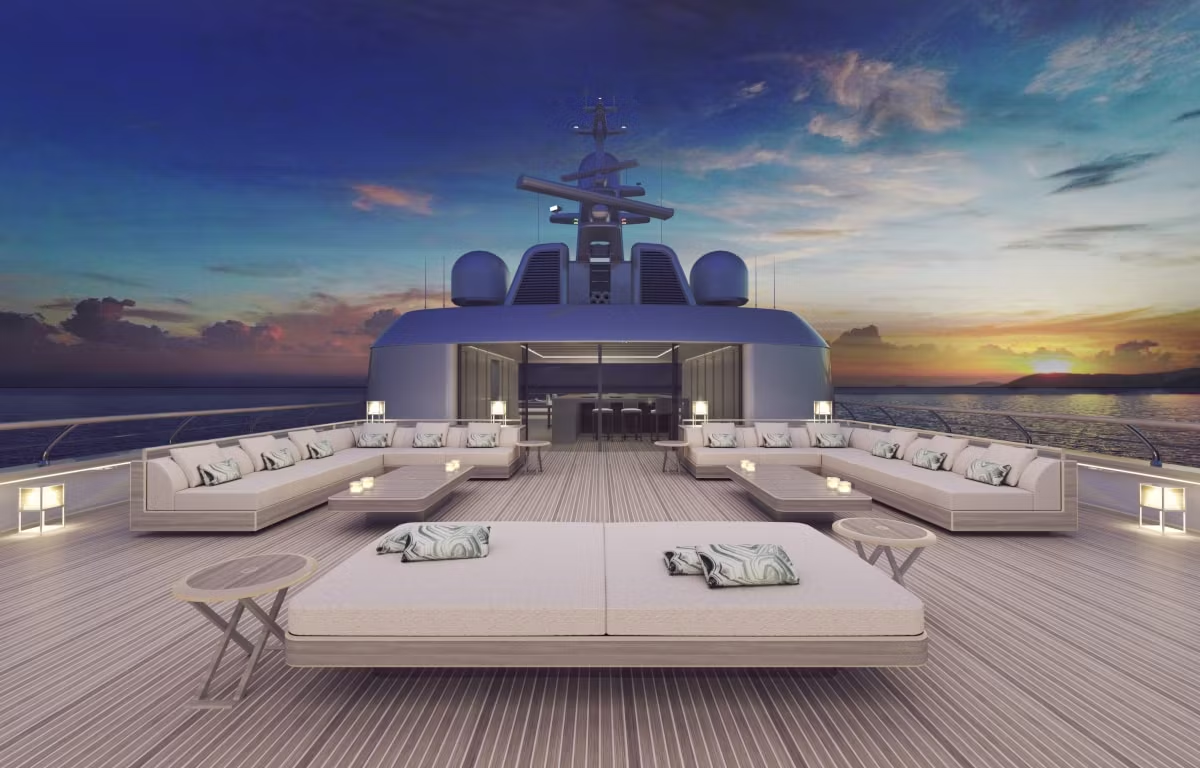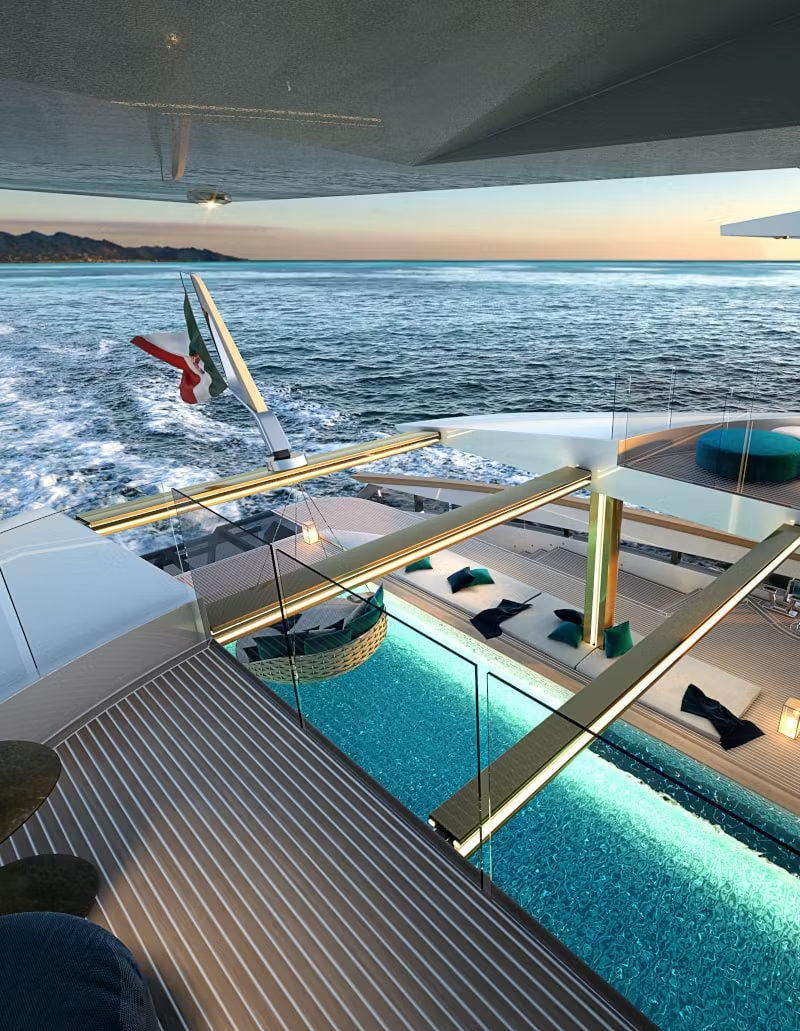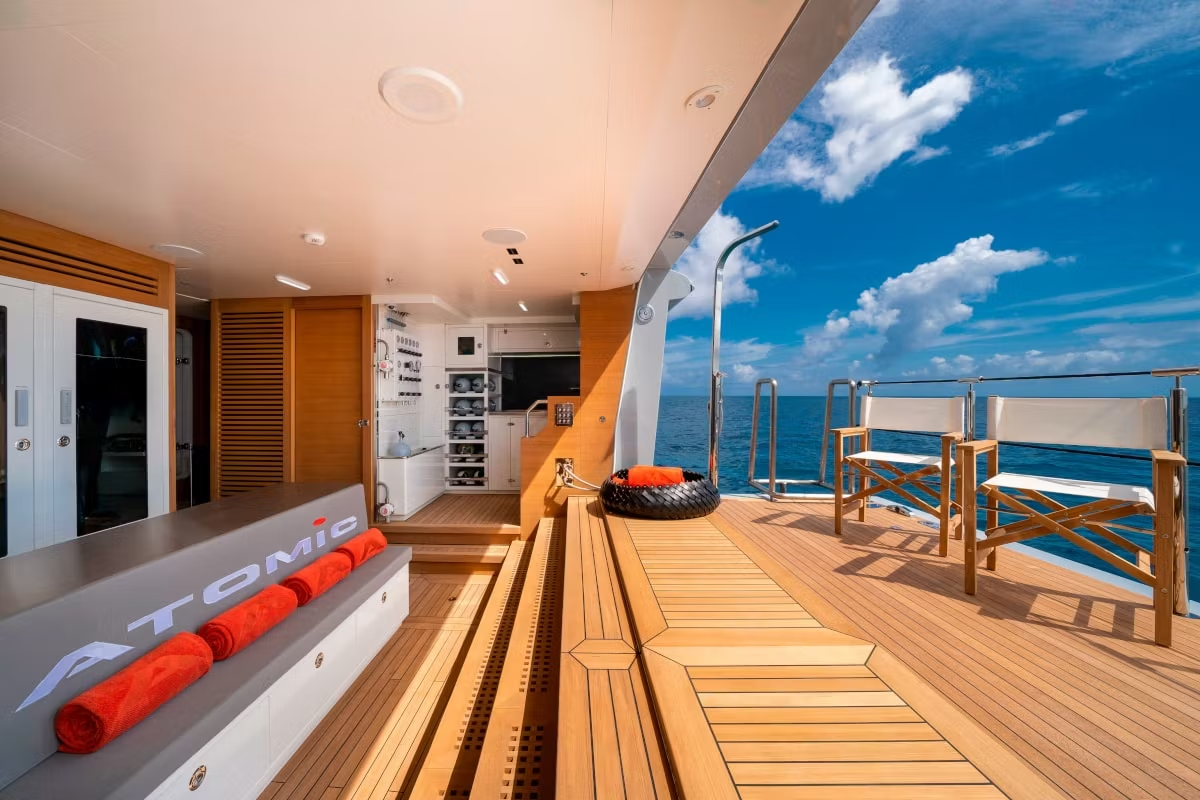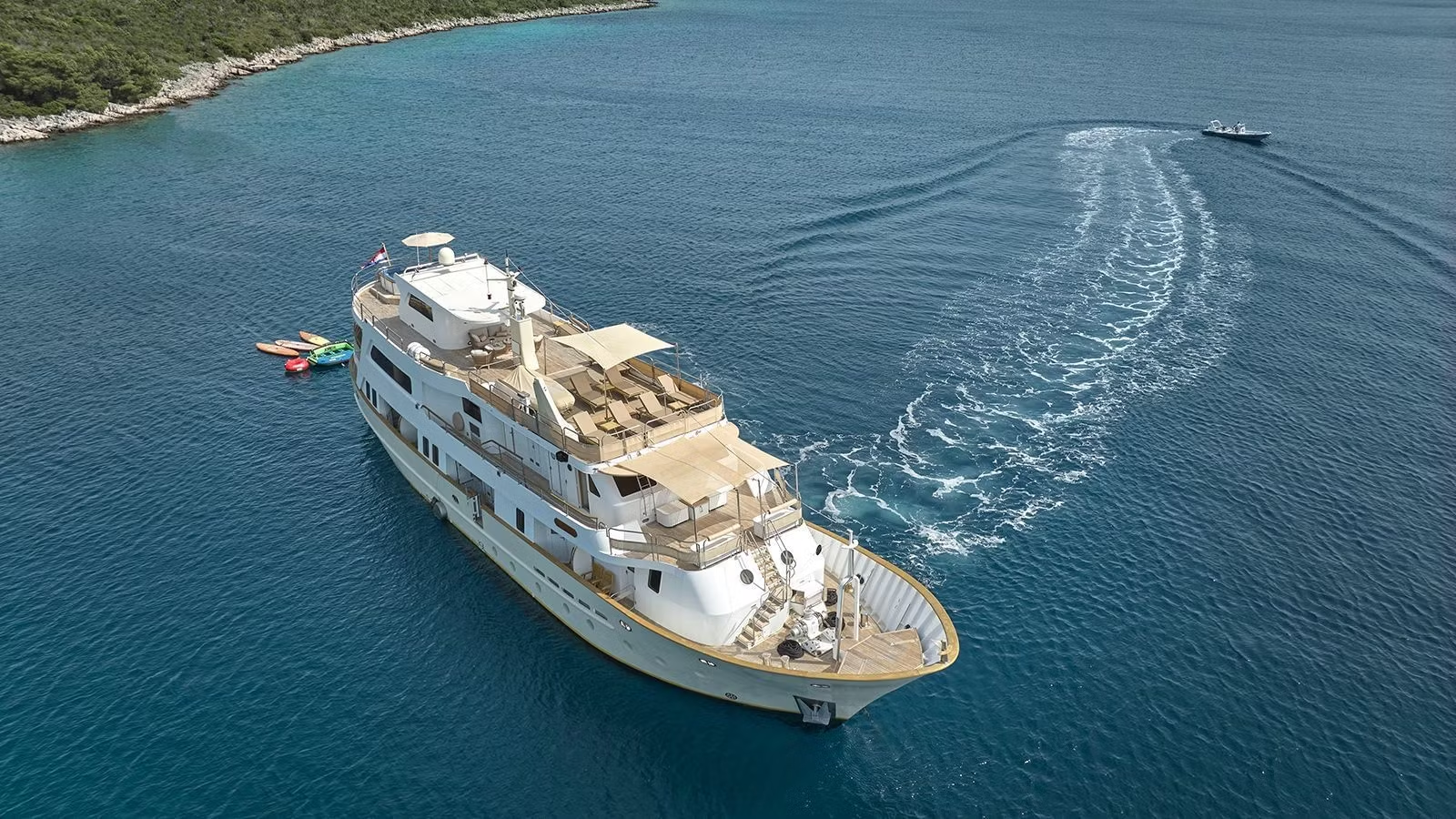
Everything You Need To Know About Every Type of Yacht 164’ And Above
IYC continues to sell more 164’ (50m)+ yachts each year. Furthermore, yachts being sold within this size category are considerably newer than pre-pandemic years. The average age of a 164’ (50m)+ yacht sold before 2020 was 15.5 years. Within the past three years, that figure has dropped to nine, indicating a notable shift towards newer vessels.
From high-end superyachts to adventurous explorers, and elegant sailing vessels, the 164' (50m)+ market segment is playing a pivotal role in reshaping the industry's landscape. IYC's expert Sales Consultants share their insights to help you make informed decisions.
Here we break down everything you need to know about all categories of yachts over 164’ (50m).
Insights
“Owners are increasingly ordering larger yachts,” says Frankie Maxwell, US Sales and Charter Director at IYC. “With 30m identified as the new benchmark for first-time yacht owners, we estimate that a higher demand for 164’-197’ (50-60m) yachts will occur within the next five years.”
Within brokerage, the pendulum has already swung, says IYC Managing Partner California and Sales Consultant, Matt Stone. “We're now in a buyer's market for 131’ (40m)+ yachts,” he says, citing 181’ (55m) Benetti NEXT CHAPTER and 164’ (50m) Westport HOSPITALITY as solid examples. “There's quality inventory coming to market that's offered in line with pre-pandemic conditions.”
Within new construction, it’s a similar story. “We've seen an unprecedented number of new contracts signed in the past two years, yet limited build slots until 2028 are driving shipyards to develop pre-engineered concepts to reduce the design phase and offer shortened delivery times. This includes Benetti, which has a 262’ (80m) concept in the pipeline.
IYC, acting as brand ambassadors of the Italian Sea Group, successfully signed three 230’ (70m)+ projects in 2023, followed by three motor yachts with IYC partners Cantiere Delle Marche, two of which were signed in January 2024. While explorers are regarded as the sherpas of the sea, once any category of yacht exceeds 230’ (70m), owners spend longer aboard.
“This is typically between four to eight weeks, though a few choose to live aboard,” says IYC Managing Partner Monaco, Kevin Bonnie. “The yacht becomes a home from home, and every convenience required for a modern lifestyle needs to be catered for, from business centers to multiple galleys.”
Opting for a larger sailing yacht not only offers notable enhancements in stability and onboard social spaces but also increases the distance and speed that owners can undertake, says IYC Charter Consultant, Alice Newnham. “A 164’ (50m)+ yacht also lends itself to increases in comfort during prolonged legs and can accommodate deck cranes, meaning they can hold more powerful toys,” she says.
Motor Yachts
While speed, range, and draft remain important considerations for motor yacht owners, the extra space aboard 164’ (50m)+ vessels allows for open layouts, larger beach clubs with swim platforms, and fold-out balconies at water level. Larger exterior decks mean more room for hot tubs and full-size swimming pools, as found on 187’ (57m) LIBERTY. There are also more outdoor entertainment options; some of which convert to touch-and-go helipads like on 240’ (73m) LAUREL. The increase in internal volume allows for grand guest suites, with lavish ensuites, walk-in wardrobes and, in some cases, dedicated owner decks.
“In the larger size ranges, it becomes less about length and more about gross tonnage,” says Richard Gray, IYC’s Head of Sales UK. “That’s the key differentiator between a 164’ (50m) and a 492’ (150m) with notable variances in guest space, number of toys, and grander wellness facilities and amenities.”
Yachts that are upwards of 164’-197’ (50-60m) are also in a sweet spot for owners wanting a more lucrative weekly charter rate, says Matt Stone: “You're able to run a leaner program in terms of annual operating costs while still getting a higher weekly charter rate.”
Spacious socializing is another bonus, says Frankie Maxwell, US Sales and Charter Director at IYC, with sky lounges and winter gardens providing a flexible open-plan layout.


Explorers
Undeniably, recent years have seen a shift in clients’ taste to lasting experiences that frequently challenge the boundaries of the conventional superyacht. The benefits of owning a versatile, self-sufficient yacht perhaps became amplified in the face of travel restrictions and the closure of social attractions on land for some, and their masculine lines and extended ranges appealed to others seeking longer, meaningful trips to lesser-touched areas.
IYC Managing Partners in Monaco, Mathilde de Roffignac and Kevin Bonnie, spent eight years on an owner’s tender process for a 367’ (112m) 7,000 GT private expedition yacht. Among the advantages of owning an explorer yacht, they highlight the freedom to circumnavigate the globe, to venture to places no one else has, and the chance to be involved with scientific research operations. Therefore, having enough redundancy to be autonomous in remote regions where there is little yachting infrastructure is a prerequisite.
“Explorer yachts pair Range Rover capability with Bentley quality,” says de Roffignac. That includes carrying spare parts to carry out repairs at sea, capable crew trained in various fields of expertise, from ice pilots and engineers to wildlife guides and advanced divers, and anything linked to remote logistics, such as waste disposal.
A true explorer requires at least a 5,000-7,000 nautical mile range, extra-large cold and fresh stores to sustain guests for weeks at sea, and onboard climatization that can cope with both warm and cold climates, adds Gray: “If the boat was built as a dedicated explorer, some form of Polar capability is also a consideration, along with full displacement for guest comfort, yet even the smallest 164’ (50m)+ explorers, such as those being built by Cantiere Delle Marche, can achieve 7,500 nautical miles at 10 knots cruising speed.
Features present on yachts like LAUREL and ATOMIC, adds IYC Sales Consultant, Mark Elliott, including vast garage spaces tailored to accommodate a myriad of toys and equipment as well as an all-out dive center like that found on the latter, “extend the appeal of these vessels beyond their luxurious interiors and cutting-edge engineering, enabling owners and guests to venture further into uncharted territories, epitomizing the spirit of adventure that defines the explorer yachting lifestyle.”

Classic Yachts and Support Vessels
The biggest consideration for any classic yacht, regardless of size, is maintenance, says IYC Sales Consultant Jamie Swaine. That includes the space and accessibility for the crew to service machinery during its design and build, not to mention regular upkeep.
“Timber takes a considerable amount of varnishing, while the deterioration on a 70-year-old aluminum or steel yacht can be significant,” he explains. “If you're buying a classic boat as an investment, you can’t go wild with a refit as you need to think about resale. Preserving original features helps maintain a yacht’s value.”
In contrast, the rise of the support vessel – a boat that shadows the mothership (motor or sail) and serves as extra storage – came about due to owners’ wishing to maintain as much guest space on board their primary yachts as possible, says Gray: “When given the choice of an aft deck taken up with tenders and toys or a luxurious beach club, the decision is easy.”
While most support vessels accompany 262’ (80m)+ yachts, there are yachts in the 197’ (60m) range that have a support vessel of a similar size (148’-240’ / 45m-70m). Carrying every toy imaginable, from helicopters and submarines to cars and sailing boats, support vessels provide an excess of storage. That includes additional accommodation for crew and specialist staff, but also more guest cabins. “Unless the yacht is classified PYC, the maximum number of guests is around 12, so to have more guest accommodation on a support vessel is a game changer,” says de Roffignac. “They need to be fast, too, to be able to go ahead of the mothership and set up in advance or clear up once the mothership has departed and not be left behind.”
There’s also more room to accommodate a large commercially rated heli deck, making it easier and safer to operate within regulations. “The outgoings from operating two boats are significant, but they’re outweighed by the considerable gains,” says Gray.
Sailing Yachts
Sustainability is the biggest advantage of any sailing yacht; less reliance on fossil fuel consumption and the freedom to go where the wind takes you. Within the 164’ (50m)+ category, performance and number of crew are crucial differentiators, especially for owners looking to race on the regatta circuit.
Like motor yachts, larger size equates to more guest space. On yachts over 262’ (80m), the bulwarks are higher, which allows for beach clubs and fold-down transoms, excellent amenities and guest service (1:1 crew to guest ratio), as well as greater displacement delivering guest comfort. The biggest limiting factor of an 262’ (80m)+, however, is the number of crew required to sail it, not to mention tall masts and deep keels.
“The size of yacht that a client chooses comes down to their budget and preferred style of sailing,” says Swaine. “If an owner is looking for a high performance, luxurious sailing yacht to go around the world in, then it’s likely to be 45 to 50m and above.”
For Ilia Riga, owner of 164’ (50m) Perini Navi ALMYRA II, it was the open plan layout and connection to the water that caught her eye. “It has huge external aft areas and a generous interior that feels intimate and cozy,” she says.
As a motor sailer, ALMYRA II offers the best of both worlds – not dependent on fuel, yet with the fuel capacity for transatlantic crossings. Refitted with a new carbon mast and sails that fit under the Panama Bridge, the yacht’s steel reinforcements make world circumnavigating easy. “We are in love with this boat, and everything that her size and layout offer,” she says.